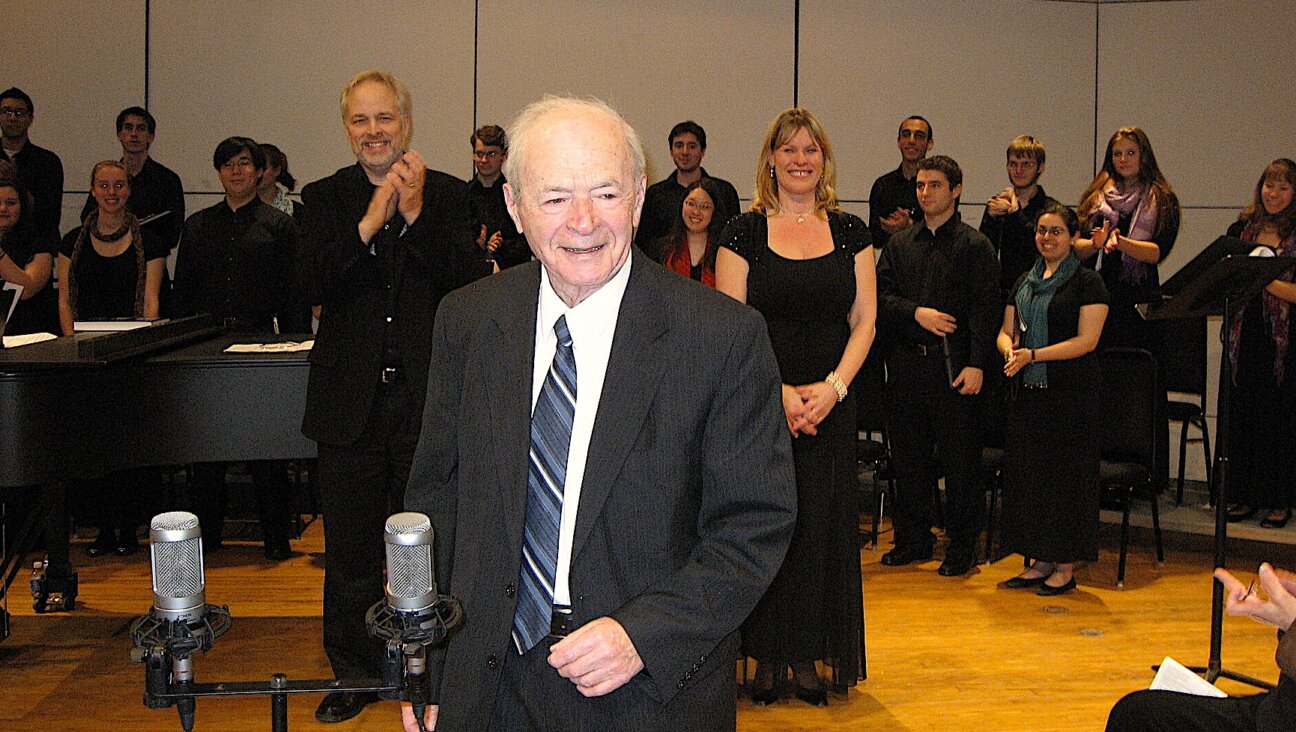Meet The Jewish Corn Farmers Of Iowa

Image by Courtesy Steven Gordon
If you drive south on Iowa’s County Road K42 off Highway 20 and look to your right just before you get to 190th, you’ll see cornstalks at the corners of the field.
That’s my land. Every year I negotiate two contracts with my renter: one for the use of the ground, and one for the corn he leaves at the corners.
When I moved with my wife and two daughters to Sioux City in 1985 I knew nothing about how America produces food.
We had picked this town for my career, then with the Indian Health Service, and the Jewish community, then aging but thriving. The Orthodox, Conservative and Reform Congregations supported the Jewish Community Center which held the Hebrew School and Sunday School. At the time I could barely read aleph-bet; I had my Bar Mitzvah at age 32 in New Mexico.
We located a Jewish real estate agent who sold us the house next door. Her husband grew up with his father and uncles, siblings and cousins, working a string of Jewish family farms that stretched for miles just east of the Missouri River. He raised corn, soybeans, cattle, and hogs. He came regularly to the Conservative synagogue that our family joined. I didn’t know much more Hebrew than he did. Living on an Indian Reservation for 3 years reinforced what I’d always known about myself: that I didn’t like big cities and that I wanted more Judaism in my life.
I had come to the right place.
Having a wife with a good Jewish education and my own set of Encylopedia Judaica helped. But so did hanging around with Jim Sherman. He grew up Jewish and farming in the area. As his children grew they encouraged his Yiddishkeit, so that by the time we met he had acquired an immense knowledge.
He served as an example and a teacher, and, while the Jewish population collapsed, as a lay leader he guided the merger of the Conservative and Reform congregations.
With the growth of the Internet, my Hebrew has expanded. For the last 4 years I’ve read 3rd or 4th aliyah (section of the weekly Torah reading) on Saturday mornings from the bimah (podium); I slip in as substitute gabbai (sexton) when needed.
The years have passed. The Jewish population has shrunk from 1,100 in 1985 to 130; the old died and the young moved to the big cities. We told our three daughters when they went to college that they couldn’t move back if they weren’t married.
Small towns have both advantages and disadvantages. With Jewish learning class sizes in the single digits, personal involvement of teachers and tremendous family support, our children got good Jewish educations. But they also got good secular educations. Back in the 80’s we had enough Jewish kids attending religious school on Tuesdays and Thursdays that the public schools didn’t schedule events on those afternoons. In a low xenophobia milieu fostered by successive waves of immigrants working the meat packing plants, we found it easy to bring up the children Jewish when the families around us were raising their children Christian.
The area votes consistently Republican, and the Jewish community includes some staunch Conservatives. But most people regard partisan politics with cynicism, disagreeing with their party affiliation on at least one major issue. We readily recognize attempts to demonize the opposition.
When we moved in our neighbors made sure we met the other half-dozen Jewish farmers in the area. I eventually I found out first-hand the thrill of land ownership. I’ve strengthened the credibility that having cropland brings by learning the vocabulary of crop production and occasionally riding a combine at harvest.
I’ve also experienced the wonder of seeing 8-foot high corn growing on my land and the joy of watching golden-yellow corn streaming from a combine into a semi. Thirty years ago, 100 bushels of corn per acre got a person bragging rights; this last year at 220 bushels per acre, I couldn’t boast, but I came close to getting sympathy.
I make sure I strike a fair deal with my tenant farmer; I guarantee him that even if crop prices fall he won’t lose money farming my ground. And I pay him for the grain in the unharvested corners, in accordance with Leviticus 23:22. I’m trying to be a light to the nations.


















